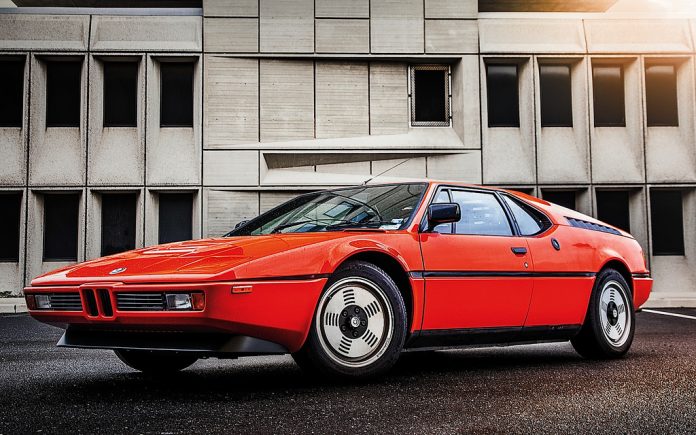These legends have tragic-comical birth histories. Legends, having one thing in common with wine: already good at the moment of their creation and ripened over time into real vintage classics. We are talking about the BMW M1 and Renault Alpine. Regardless of their exterior, engine performance, driving sensation or equipment – these models’ cult flair is nowadays more than ever omnipresent, as their prices tell.
BMW M1: Hero of the young
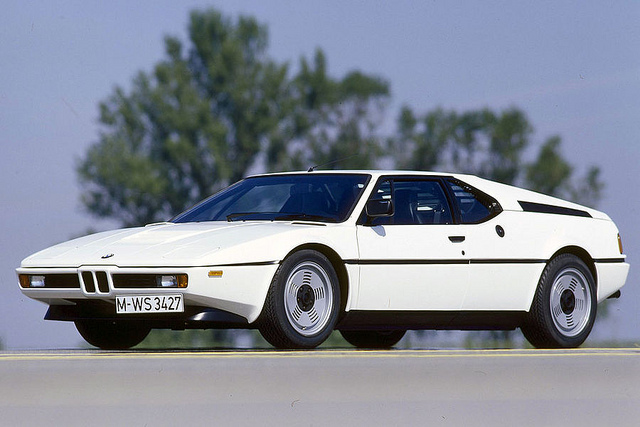 The older editions were heroes for the contemporary youth. For friends of racing, this car is most successful in bringing a racing sensation to the public road. Clear evidence of the M1’s greatness is the fact that after almost 40 years there is still no successor. To be honest: Never again will so many racing cars be found on the public road outside the circuit, even considering the fact that the M1’s street version was treated shabbily from the start.
The older editions were heroes for the contemporary youth. For friends of racing, this car is most successful in bringing a racing sensation to the public road. Clear evidence of the M1’s greatness is the fact that after almost 40 years there is still no successor. To be honest: Never again will so many racing cars be found on the public road outside the circuit, even considering the fact that the M1’s street version was treated shabbily from the start.
With the M1, BMW intended to scare its competition in the Group 4 racing class, such as the Porsche Carrera RS, the Ferrari 365 GTB4 and other racing legends, by using an integrated Formula-1-drive. Simultaneously, the street version of the M1 had to be developed. BMW went out of its way and engaged in smart co-operations. Lamborghini was involved the development of the suspension as well as the assembly and finishing. The celebrated designer Giorgetto Giugaro (Italdesign) was responsible for the car’s design.
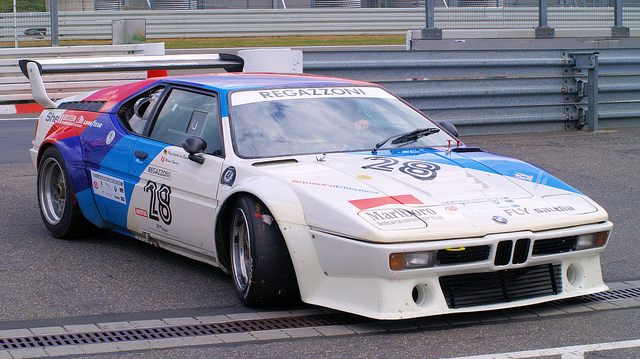 The plan was clear, the team was impatient to get started and ambitions were high. Sometimes, however, dreams burst like a soap bubble, or at least partly. In 1975 BMW had to step back, distancing itself from the undoubtedly very ambitious plans. The intended Formula-1-drive turned out to be unfeasible, in terms of time as well as financially. Instead, the M1 received a 6-cylinder inline-engine with 277 HP in the rear, developed by engine pope Paul Rosche. Simultaneously the car was equipped with new plastic bodywork, a shorter wheelbase and smaller exterior measurements, and its equipment was reduced.
The plan was clear, the team was impatient to get started and ambitions were high. Sometimes, however, dreams burst like a soap bubble, or at least partly. In 1975 BMW had to step back, distancing itself from the undoubtedly very ambitious plans. The intended Formula-1-drive turned out to be unfeasible, in terms of time as well as financially. Instead, the M1 received a 6-cylinder inline-engine with 277 HP in the rear, developed by engine pope Paul Rosche. Simultaneously the car was equipped with new plastic bodywork, a shorter wheelbase and smaller exterior measurements, and its equipment was reduced.
Until today, the M1 road version has lost none of its fascination
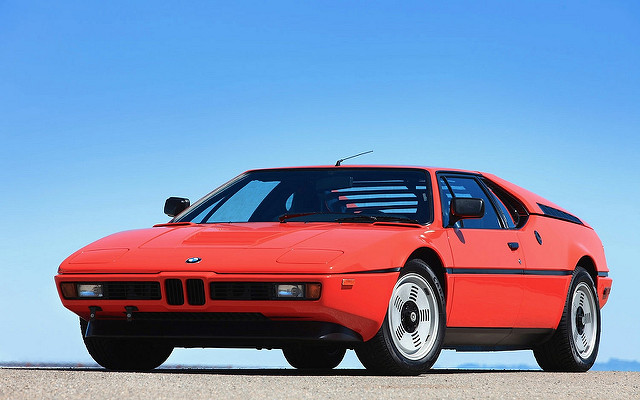 In 1977 BMW heralded the final sprint of development. Suspension, chassis, gearbox and steering were thoroughly revised, the 6-cylinder stood on the test bench almost constantly, the ergonomics were touched up and plenty of testing in the environmental chamber was done. Speed testing took place regularly In Nardò. And indeed – right on time for the Paris Motor Show, the BMW M1 was ready in all its beauty and power. At its presentation, the 277 HP road version laid the basis for a fascination lasting until today. Of course the limited edition of only 460 units contributed to its legend.
In 1977 BMW heralded the final sprint of development. Suspension, chassis, gearbox and steering were thoroughly revised, the 6-cylinder stood on the test bench almost constantly, the ergonomics were touched up and plenty of testing in the environmental chamber was done. Speed testing took place regularly In Nardò. And indeed – right on time for the Paris Motor Show, the BMW M1 was ready in all its beauty and power. At its presentation, the 277 HP road version laid the basis for a fascination lasting until today. Of course the limited edition of only 460 units contributed to its legend.
And today? In the second decade of the 21st century the BMW M1 has become one of the most sought-after classic cars, which is all the more apparent due to the fact that its price range lies beyond the 500.000 euro mark. Undoubtedly, the flat, extraordinarily sporty silhouette brings every onlooker under its spell. As soon as you start the engine, the roaring engine silences all other sound, the headlights are flipped up and the speed hunger is streaming out of every pore of the sports car, then, the fascination of the BMW M1 really shows.
A Frenchman walking in the steps of Porsche
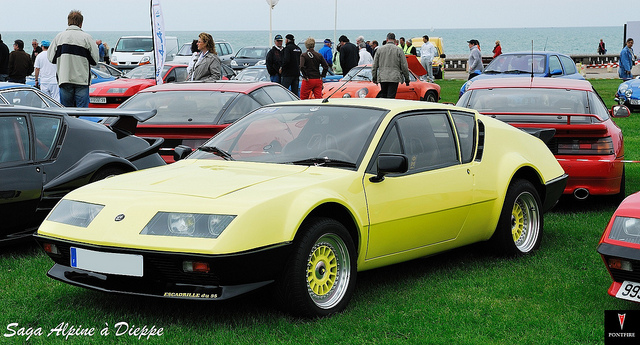 Even though the fascination for the BMW is almost impossible to top, in the 70ies and 80ies a Frenchman caused a great stir. The Renault Alpine A310 captured all hearts, starting in 1973. This was mainly due to the intention of Alpine founder Jean Rédélé, who not only chose for sportiness, but equipped his new prototype with an entirely new comfort. His target was generating new market shares as a French competitor of Porsche. Just like in Porsche he chose for a V6-engine and the 2+2 seat concept. An anecdote in the margin: The works on the sporty-comfortable Renault Alpine A110 were almost exclusively carried out in Rédélé’s private home. According to witness accounts the first plans, drawings and models were created in the kitchen, while in the living room the 4-cylinder engine was conceived. Ultimately in 1971, the prototype of the Renault Alpine A310 was presented to the public in Geneva.
Even though the fascination for the BMW is almost impossible to top, in the 70ies and 80ies a Frenchman caused a great stir. The Renault Alpine A310 captured all hearts, starting in 1973. This was mainly due to the intention of Alpine founder Jean Rédélé, who not only chose for sportiness, but equipped his new prototype with an entirely new comfort. His target was generating new market shares as a French competitor of Porsche. Just like in Porsche he chose for a V6-engine and the 2+2 seat concept. An anecdote in the margin: The works on the sporty-comfortable Renault Alpine A110 were almost exclusively carried out in Rédélé’s private home. According to witness accounts the first plans, drawings and models were created in the kitchen, while in the living room the 4-cylinder engine was conceived. Ultimately in 1971, the prototype of the Renault Alpine A310 was presented to the public in Geneva.
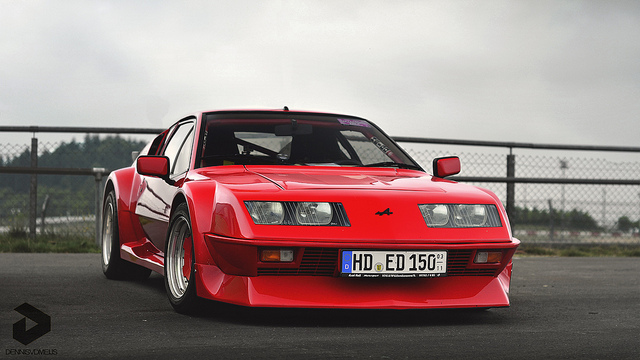 Technically, the racing bolt was not revolutionary innovative in its conception. Instead, Rédélé and his team put their trust in the central tube frame (A110), the wheelbase of the A110 GT4 and the rear-wheel drive technology of the Renault 8 and 10. Furthermore, the wheels had individual suspension and were equipped with tie rods, coil springs and stabilising rods. Important in this model, however, is the suspension’s fine-tuning. If this is correctly adjusted, the A310 is never unstable, not even at highest speed. A real highlight is the lightweight bodywork of glass-fibre reinforced plastic.
Technically, the racing bolt was not revolutionary innovative in its conception. Instead, Rédélé and his team put their trust in the central tube frame (A110), the wheelbase of the A110 GT4 and the rear-wheel drive technology of the Renault 8 and 10. Furthermore, the wheels had individual suspension and were equipped with tie rods, coil springs and stabilising rods. Important in this model, however, is the suspension’s fine-tuning. If this is correctly adjusted, the A310 is never unstable, not even at highest speed. A real highlight is the lightweight bodywork of glass-fibre reinforced plastic.
Renault Alpine crowns the vintage car ranking
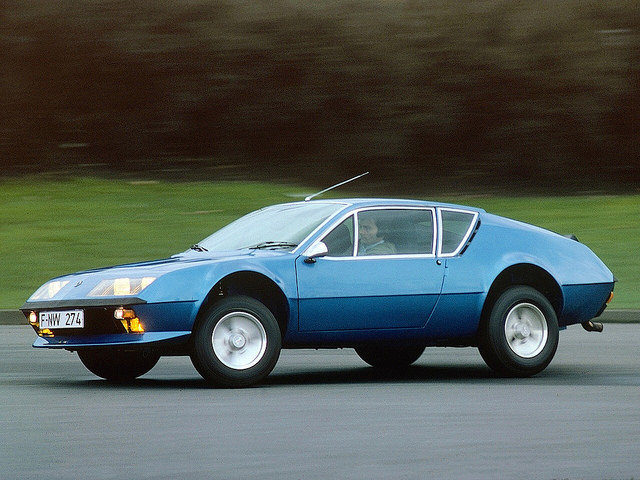 When the first model was still on a 4-cylinder basis, the start of 1975 saw versions with a PRV-6-cylinder engine and V6-prototypes. Today, these specific models still stand for eminent sportiness, connecting a racing sensation with sporty comfort. No other Renault model is so much sought-after as a vintage car as the sporty-comfortable Renault Alpine. Depending on year of construction and condition, you may pay ca. 100.000 euro for these models. Basically, these cars are legendary and have a high cult factor just like the BMW M1.
When the first model was still on a 4-cylinder basis, the start of 1975 saw versions with a PRV-6-cylinder engine and V6-prototypes. Today, these specific models still stand for eminent sportiness, connecting a racing sensation with sporty comfort. No other Renault model is so much sought-after as a vintage car as the sporty-comfortable Renault Alpine. Depending on year of construction and condition, you may pay ca. 100.000 euro for these models. Basically, these cars are legendary and have a high cult factor just like the BMW M1.
Foto: Auto Clasico, Jan Barnier, Anthony Seed, Dennis van der Meijs/ flickr.com

